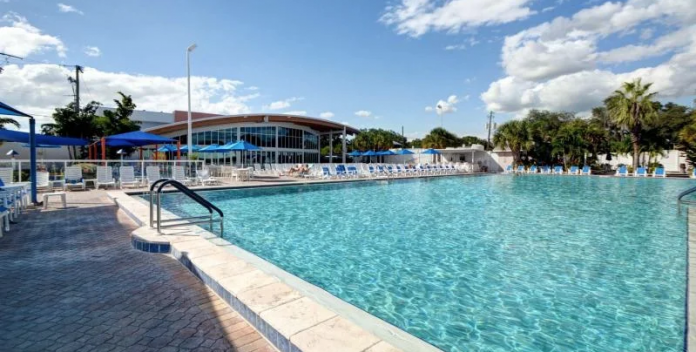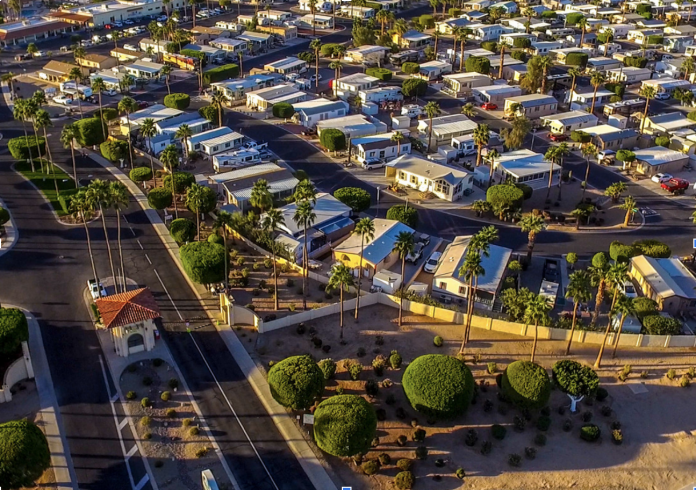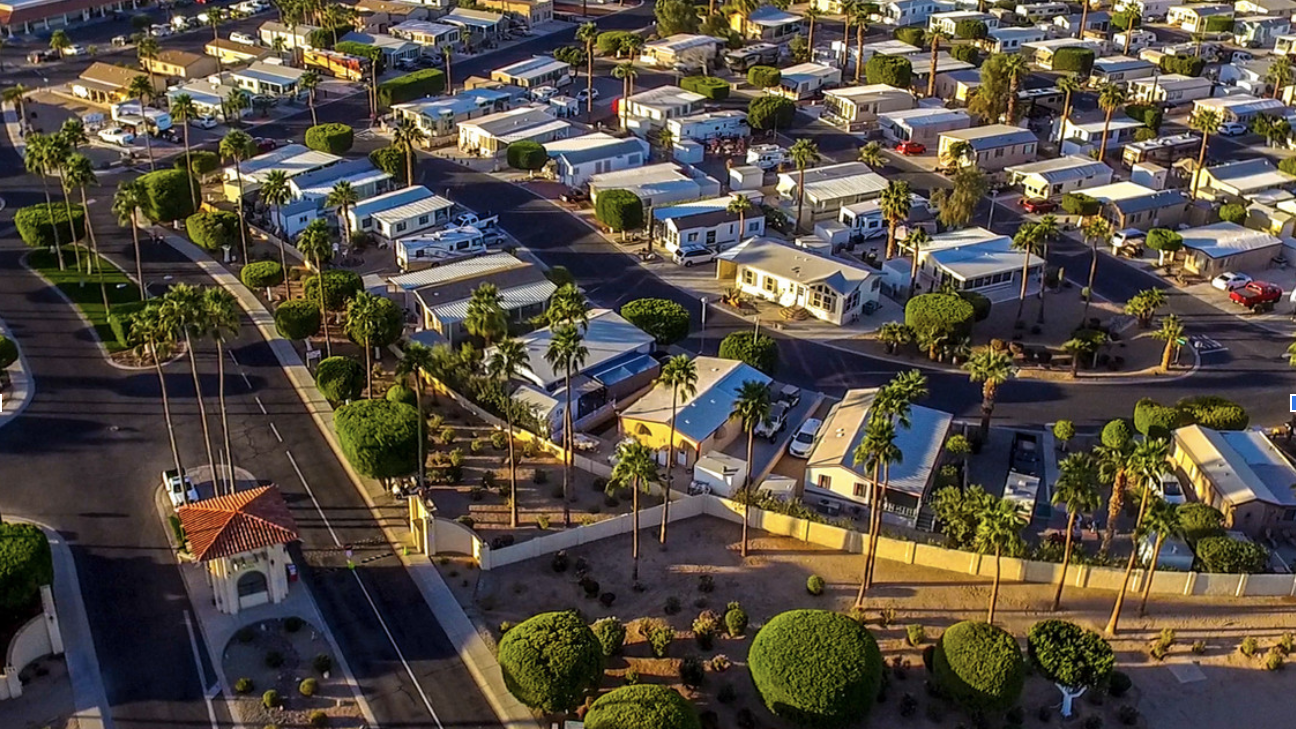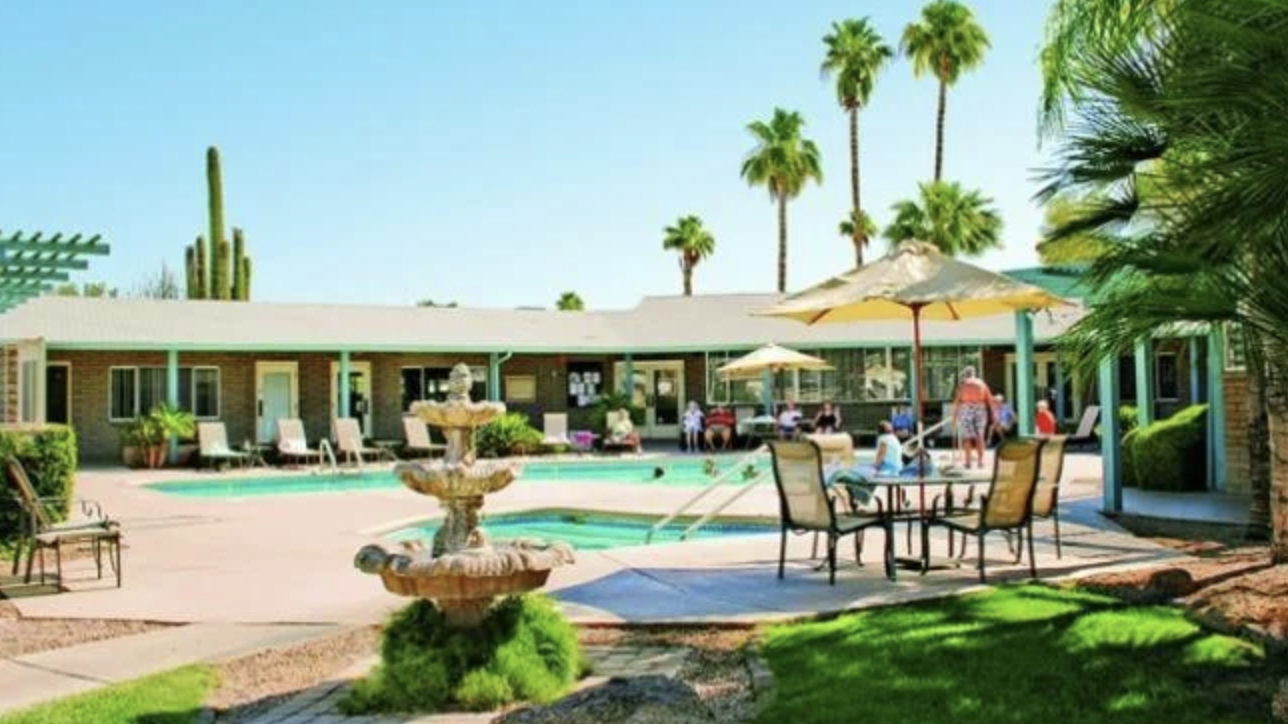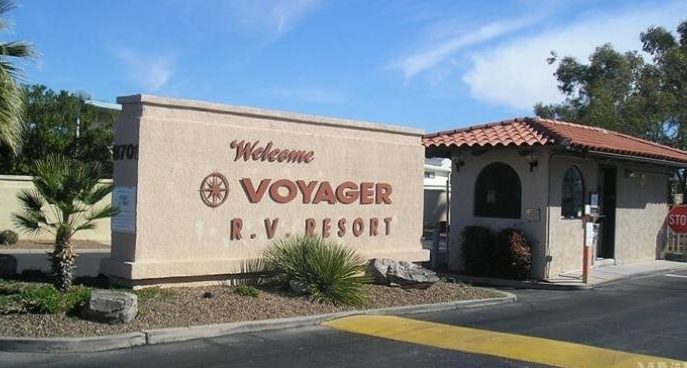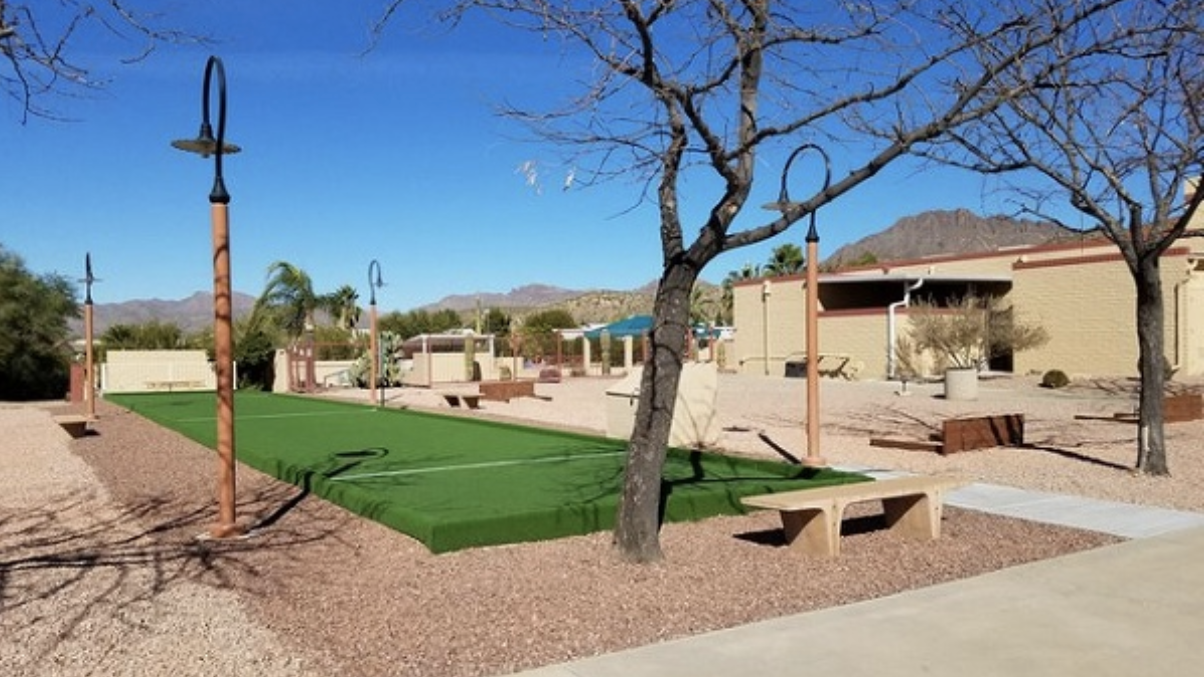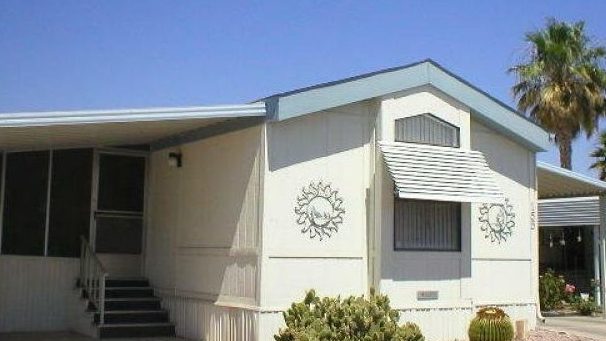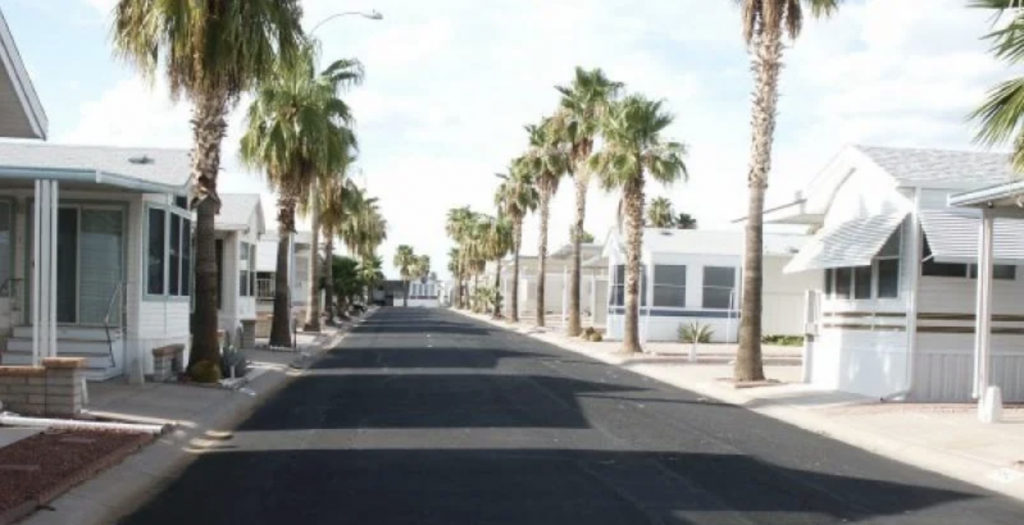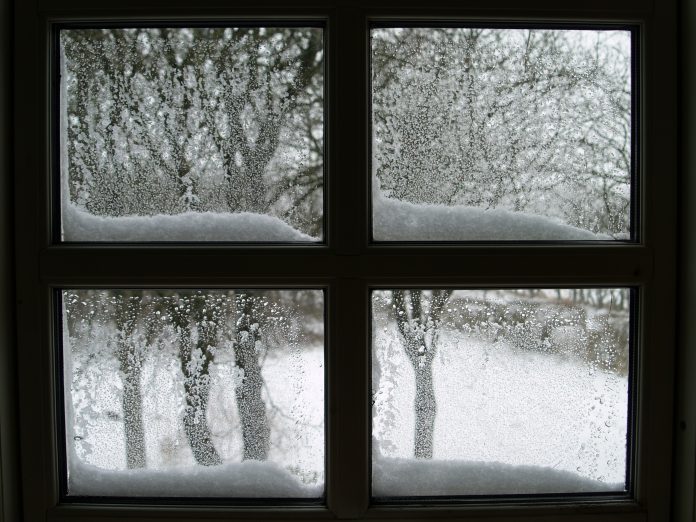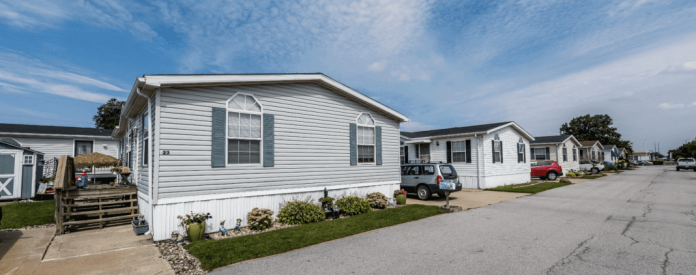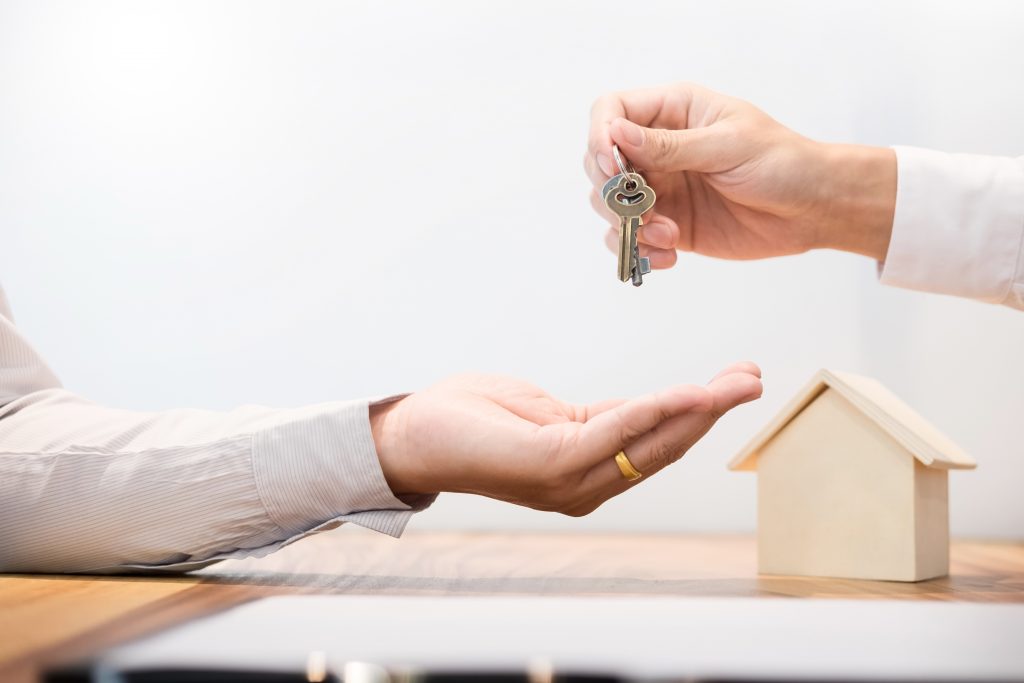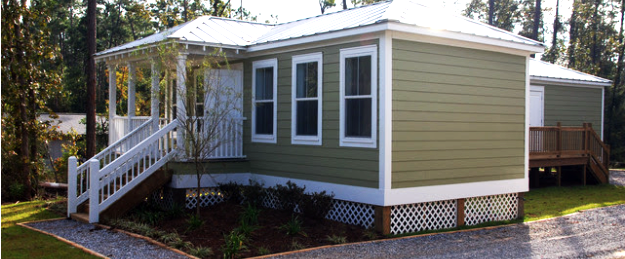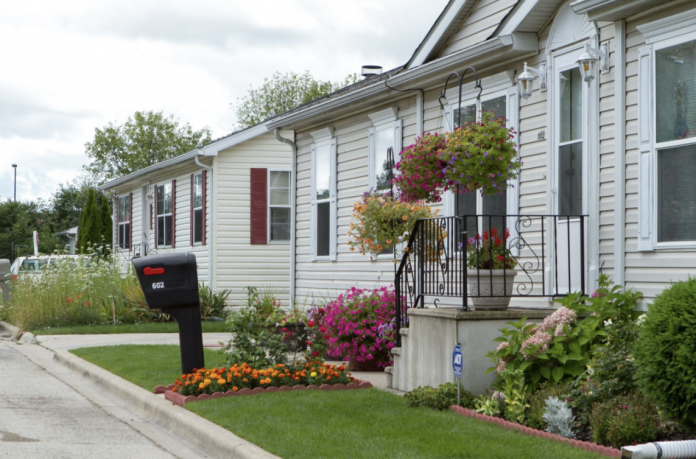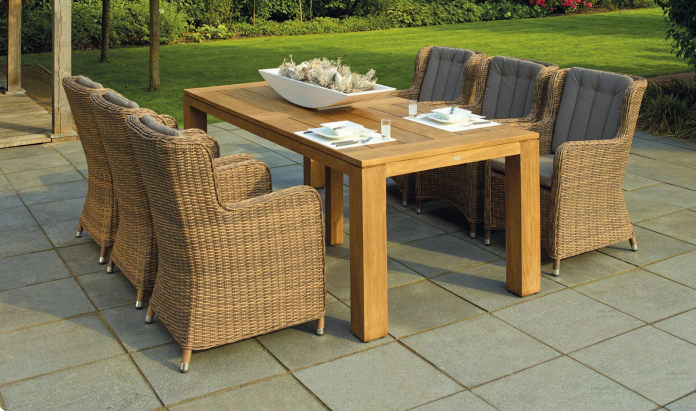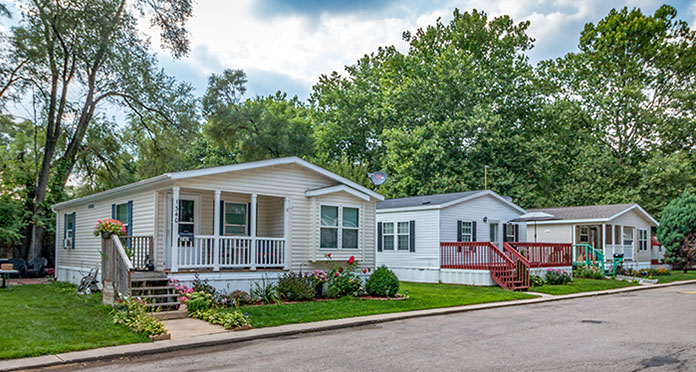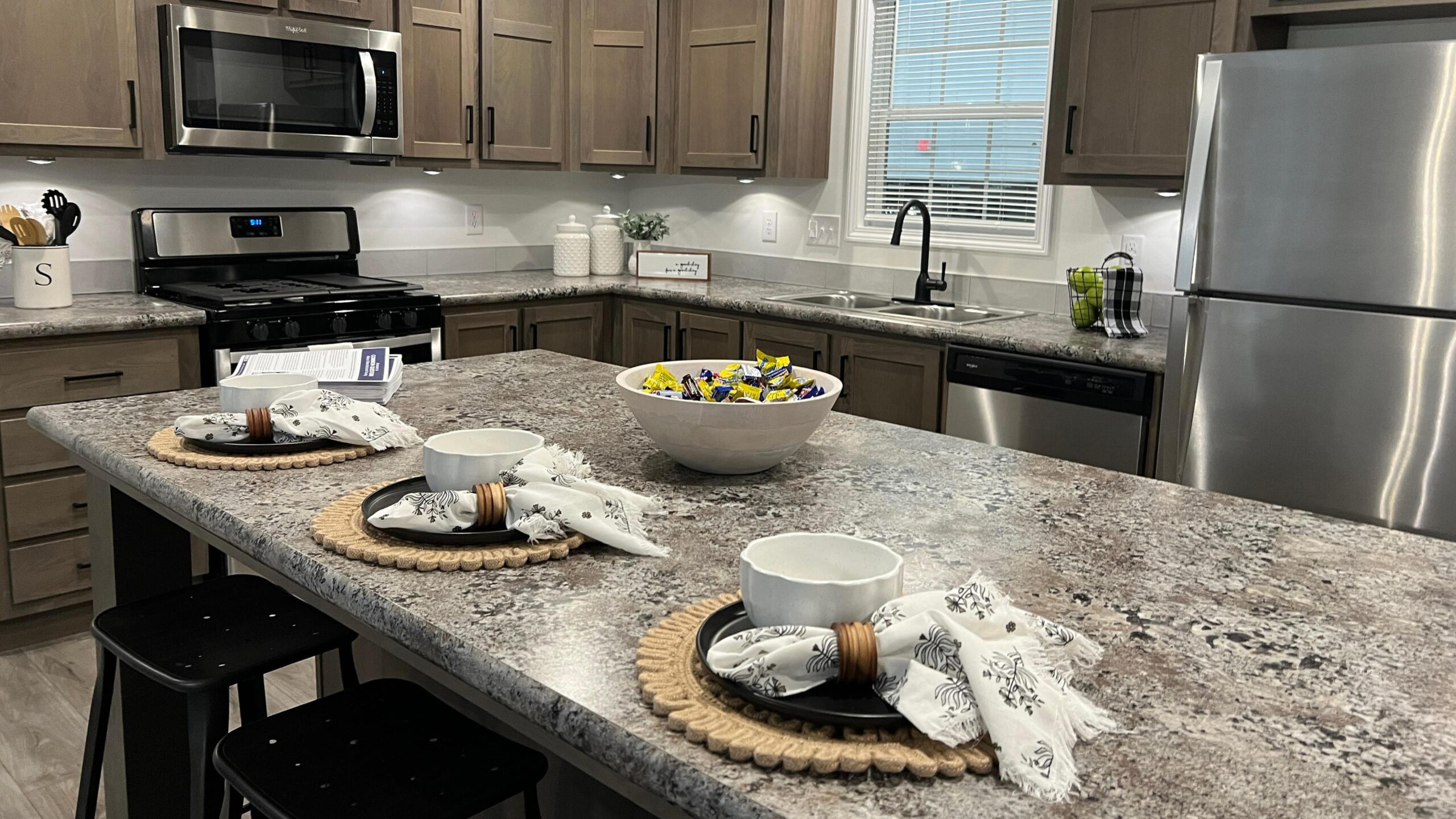The summer and fall months are a key window for installing new patios beside your manufactured or mobile home. They’re a great way to provide some added flair to your home’s backyard, not to mention make a great space for entertaining your family and friends while grilling up a nice dinner.
If you’re considering adding a patio to your mobile home before the summer is over, check out this handy guide to catch up on the latest patio styles, and which will be best for your manufactured or mobile home.
What makes a patio, a patio?

A patio is generally defined as a paved outdoor space behind the home used for entertaining, grilling, dining, or recreation. These are fairly similar to decks, since they often serve the same purpose, but patios are more often made with stone or concrete compared to wooden decks. Additionally, patios are usually built as one flat level, compared to decks that are often built with multiple levels or floors, though this is not always the case.
You can check out our in-depth breakdown on all things decks and porches for more information if your project is heading in that direction.
Why should I add a patio or upgrade my existing patio?
Installing a new patio onto your manufactured home or mobile home can greatly add to your home’s visual appeal. This is especially true if you’re considering selling your mobile home in the future, as the added patio to your home’s exterior may increase its asking price.
Financials aside, sprucing up the patio on your home can also:
- Add extra lounging space for those cool summer nights
- Provide extra space for your outdoor furniture or grill
- Give your backyard a flat, paved surface with ultimately less lawn to mow each summer
- Options for added fixtures, such as an above-ground fire pit
- Make your backyard more wheelchair-accessible with a flat, paved surface
The best part? Compared to a wooden deck, patios typically come with less year-round maintenance and will usually last you much longer, making a patio a great long-term investment for your mobile home.
What types of patios exist? What type of patio is best for me?
No matter which material you choose for your patio, you’ll want the right tools to ensure you’re building on flat, solid land. Before you lay down your building materials, you’ll typically mark the plot of land you’re building your patio on with stakes and mason’s line, and use a foundation of gravel or sand under your building materials. All of these materials can be found at your local hardware store.
By far the most common form of patio is a stone or concrete patio. These materials provide a consistently flat surface for your mobile home’s patio that is durable to the elements and relatively easy to work with.
A concrete patio installation is relatively simple, too. It involves spreading your concrete mixture over the leveled surface where your patio will lay, ensuring the concrete is flat and smooth before it hardens. With stone, the process is a little different – essentially, you’ll lay out your stone across your leveled surface, making sure each stone is snug and flush with one another.
You’ll also commonly see patios made out of brick. Brick patios are similar in composition and construction quality to a stone patio, but may vary slightly in color, surface texture, and cost. These patios are installed in a very similar manner to stone patios.
Though stone, concrete, and brick patios are the most common for mobile home patios, they’re not the only types that you should consider. There are a variety of materials you can choose to build your patio with:
- Tile patios are another fairly common choice. If you choose tile for your mobile home patio project, be sure to go with a style of tile that’s specifically rated for outdoor use.
- Cobblestone, while a less common used for patios, is another option that gives your mobile home’s patio a more rugged feel. Cobblestone patios can be slightly tougher to install compared to the other options listed above, since there’s more work involved to ensure your cobblestone will lay flat.
- Gravel is a great option for your patio if you’re on a budget. Since you’ll often use gravel as a foundation for your patio anyways, you could simply have a gravel surface – similar to what you might find on a playground.

You can check out our mobile home parts and appliances catalog once the time comes to purchase your patio materials. The best patio material for your mobile home will depend on your personal taste and budget – do you like the aesthetic of a colored brick outside your back door? Or does the simplicity of a concrete patio appeal more?
How much should I budget for a patio project?
The amount of money you invest in your new patio project depends entirely on your building material of choice. For a stone patio measuring 100 square feet, expect to pay anywhere from $500 to $750 for the stone itself, on top of the costs for your foundation materials – gravel, sand, and other tools needed to complete the project.
You may also consider budgeting for a wood patio, too. However, the price of lumber has essentially doubled over the past year, making it a higher-priced option than it once was. Still, you can source the right lumber for a price in the triple digits, but you’ll want to factor in the costs of a more intensive maintenance regimen for a wooden patio.
Should I hire a contractor to install or renovate my patio?

If you’re comfortable handling a weekend project outdoors and installing your patio yourself, then DIY is the way to go. Compared to roof, deck, or porch installations, patios are simpler to install and often don’t require a permit from your city or township. However, be sure to check your local permit requirements, as well as the rules and bylaws of your manufactured home community or mobile home park if you live in one, before starting on your patio project.
However, if you’d rather leave a patio installation to the professionals, it’s not too difficult to find a contractor in your area that can get the job done quickly. Online contractor sites such as Angi offer a wide variety of services and providers that can help with your project.
MHVillage also offers a number of additional resources on a variety of remodeling topics – from patios, to porches and decks, and issues you’ll have to consider when going about a mobile home remodel. But when it comes to your mobile home’s new patio, the investment should be well worth the outdoor enjoyment for you, your family, and your friends.



